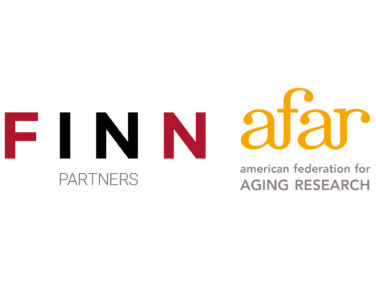2020 ended with a slew of positive information regarding a COVID-19 vaccine. The FDA granted emergency use authorization for Pfizer-BioNTech’s vaccine on December 11th with the first doses administered to front-line healthcare workers and nursing home staffers soon after that on December 14th. But even though the life sciences industry should be commended for achieving this scientific breakthrough in record time, a vaccine is only useful if people take it.
During an online event, “When Public Health Means Business,” Dr. Anthony Fauci, Director of the National Institute of Allergy and Infectious Diseases, said if 75% to 80% of Americans are vaccinated through the second quarter of 2021 then we may able to achieve herd immunity by the end of this summer and even return to a level of normalcy by the end of the year. However, if vaccination levels are significantly lower, then it can take much longer to achieve that goal.
So, now that the scientists have done their jobs in creating a vaccine, it is up to healthcare communicators to help educate people on the importance of taking it.
“Now that vaccines are starting to be administered, there should be a concerted public relations effort to provide transparency around the development process and clinical trial results in order to build public trust that the vaccine is necessary and effective,” says Jim Lefevere, International Business Leader, Roche Diabetes Care. “Operation Warp Speed has committed billions of dollars to the development of vaccines, and there should be a commensurate effort to build trust in the process and encourage people to take it.”
Trust and Mistrust in the Vaccine
The good news: the number of people willing to take a vaccine is rising. According to a December 2020 Kaiser Family Foundation poll, 71% of people say they would definitely or probably get a vaccine for COVID-19 if it was determined to be safe by scientists and available for free—that is up from 63% from a September survey. Better yet, the increase of those willing to get the vaccine is seen across racial and ethnic groups and among both Democrats and Republicans. However, 27% still say they probably or definitely would not get a COVID-19 vaccine even if it was considered safe and made free for all.
Many of those people are part of the anti-vaxx movement, which spreads misleading information and conspiracy theories about vaccines—a group which is only growing. In a report by the Center for Countering Digital Hate (CCDH) titled, “The Anti-Vaxx Industry: How Big Tech Powers and Profits from Vaccine Misinformation,” the group revealed they found 409 English language anti-vaxx social media accounts that total 58 million followers. Furthermore, they found the number of followers for these accounts has increased 19% since the start of 2019.
It should not be surprising then that the CCDH also found that those who rely on social media for news and updates about COVID-19 are less likely to get a vaccine. Only 56% of respondents in the U.S. who prefer social media for their COVID-19 news say they definitely or probably will get a vaccine. But that number rises to 66% for those who instead turn to traditional media.
“COVID-19 has become an unfortunate political minefield, and social media is the kindling for this fire and where the misinformation needs to be countered,” explains Dawn M. Fallon, Practice Lead, Health, Makovsky. “When you see user comments with misinformation on your social media posts, you need to dive right into the flames and respond to each comment, no matter how incendiary. Keep it professional. Respond with the demeanor of a veteran clinician. And bombard them with the best facts available at the time including links to some of the most respected institutions that are guiding us through this pandemic, such as the CDC, WHO, Johns Hopkins, and the Mayo Clinic.”
Strategies to Counter Misinformation
How else can PR professionals and health communicators battle what Melissa Rieger, SVP, Practice Head, Health & Wellness, Red Havas, aptly describes as an “infodemic” that threatens our ability to control the pandemic? For Rieger, it comes down to three things:
- State the Facts: Use research-based statistics to back up claims. Avoid statements that could spread unnecessary panic—or false hope. When speaking about treatments, provide the full context of what is known and address areas of uncertainty to avoid speculation.
- Use Trusted Sources: Back news and communications with information from credible sources, such as the WHO, official state/government sites, and reputable healthcare organizations.
- Think Person-to-Person: Pandemic-era consumers want answers quickly, in plain-speak and with transparency. It’s all about making a person-to-person connection, communicating with empathy, and leading with purpose.
Empathy is especially important, since facts will not resonate with everyone.
“Anti-vaxxers and disinformation spreaders are immovable when confronted with facts,” explains Kristie Kuhl, JD, Managing Partner, U.S. Biopharma Group, Finn Partners. “As an Emory University study demonstrated, our brains reward us for confirmation bias. Facts alone don’t resonate; facts plus emotions do. We need to convey information about the pandemic, safety, and treatments to the public. But, without an emotional connection, there is no motivation to act. Some respond well to caring for others, so appealing to audiences’ sense of compassion can drive positive actions such as mask wearing, washing hands, and getting vaccinated.”
Additionally, communicators need to make sure they leverage the right spokespeople who won’t alienate different audiences.
“Although opinion-leading doctors often are the right choice to be credible voices, given the backlash that some of the more reputable experts have received, it is advisable to engage other influential people, particularly those who won’t be seen as polarizing,” says Shannon Walsh, Managing Director, PR&I, Ogilvy Health. “We also need to bring the message to everyone, which means going beyond earned and social media by including other channels such as public service announcements and community-level initiatives.”
Lefevere agrees that we need to saturate all available channels over the course of 2021, and even suggests we model it similarly to the D.A.R.E. (Drug Abuse Resistance Education) public service announcement from the 1980s or the “This Is Your Brain…This Is Your Brain On Drugs” campaign.
“In order to overcome some of the divisiveness, I would suggest developing a multi-layered message that first provides historical context for diseases that have been eradicated by vaccines and then also appeals to our collective will and patriotism to get back to normal,” he says. “Finally, I would provide some incentive to drive early participation of getting the vaccine so there is critical mass by summer 2021.”








